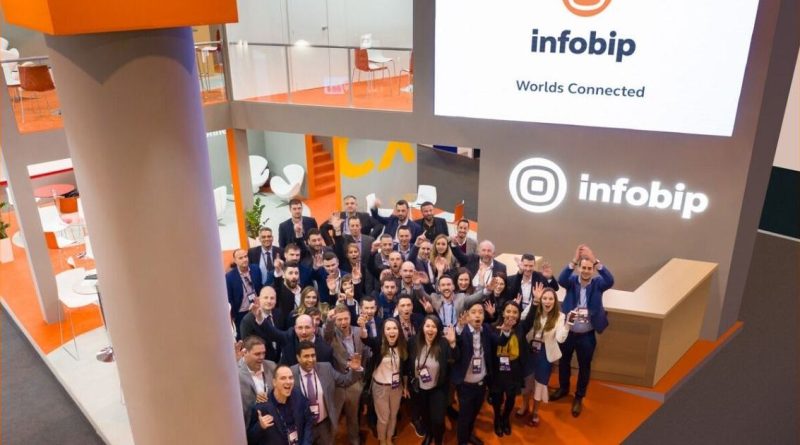Gartner Magic Quadrant for Communications Platform as a Service (CPaaS) 2024
Suggesting that CPaaS is merely growing would be a gross understatement.
Gartner predicts that by 2028, 90% of global enterprises will employ CPaaS for customer experience and engagement, a significant jump from 50% in 2023.
The plethora of communication channels we see today would have been unimaginable just a decade ago, yet they are now ubiquitous.
The rise of generative AI (GenAI) within customer service and experience is set to further evolve these channels, making them even more advanced.
To leverage these channels for maximizing CX potential, a CPaaS platform becomes essential.
However, the increasing importance of CPaaS has led to a crowded market, making it challenging for buyers to identify and select the best solution for their needs.
That’s where Gartner comes in.
Gartner has analyzed and evaluated the credentials of the leading CPaaS providers and has narrowed it down to the following 11 vendors.
What is Communications Platform as a Service (CPaaS)?
CPaaS is a cloud-based solution enabling developers, IT teams, and nontechnical business roles to create various communications features using APIs, SDKs, documentation, and no-code/low-code builders.
For Gartner, the role of CPaaS is to enhance communication workflows by providing easy access to various communication features and channels.
These channels are key to Gartner’s Magic Quadrant criteria, including standard capabilities like APIs for:
- Making and receiving voice calls
- Contacting and being contacted via SMS and email
- Performing local and global direct inward dialing (DIDs)
- Identity confirmation such as 2FA/MFA and flash calling
- Using rich communication messaging platforms like Apple Messages for Business, RCS, Google Business Messages, MMS, WhatsApp, and WeChat
Additionally, Gartner considers the level of customer service and support for CPaaS capabilities when assessing a company’s credentials.
While these are examples of standard capabilities, optional features include conversational bots and APIs for voice, network, messaging channels, programmable video, and programmable wireless.
Gartner evaluates these capabilities before categorizing the 11 CPaaS providers into four groups: Leaders, Challengers, Visionaries, and Niche Players.
Performance Overview:
Gartner Magic Quadrant Leaders
Leaders are the companies that significantly influence the market’s direction. They showcase a clear vision for CPaaS deployment and effectively execute this vision through their organizational capabilities, business model, and platform. This year’s Leaders are:
- Twilio
- Infobip
- Vonage
- Sinch
These four companies were also Leaders in the 2023 CPaaS Magic Quadrant. While Infobip, Vonage, and Sinch maintained similar results, Twilio notably improved in its ability to execute.
Twilio
Twilio, a CPaaS pioneer, remains a substantial vendor. Gartner praises its extensive carrier network and scalable platform, making it ideal for global enterprises looking to expand. Twilio’s use of predictive and generative AI in its Segment CDP enhances targeting, campaign accuracy, and business outcomes.
Infobip
Infobip’s CPaaS X platform simplifies integration, with strong support for onboarding and compliance. Its solution-oriented go-to-market strategy and global reach, along with responsive support, are significant strengths.
Vonage
Vonage’s cross-platform AI integration expands its Network API offerings and enhances anti-fraud and security measures. Its strong customer support and regional technical teams, alongside a vertical focus, are commendable.
Sinch
Sinch boasts extensive CPaaS channel coverage, including RCS/RBM, regional channels like WeChat, and advanced channels such as video. Its diverse go-to-market model enables global customer support.
Gartner Magic Quadrant Challengers
Challengers are established, credible, and meet customer expectations but have limitations preventing them from achieving Leader status, such as technology gaps or limited geographic reach. This year’s Challengers remained the same:
- Tencent Cloud
- Bandwidth
Tencent Cloud
Tencent Cloud offers scalable audio and video capabilities for gaming, meetings, education, and social media. Despite impressive innovations, it struggles outside the APAC region and faces integration issues with third-party tools.
Bandwidth
Bandwidth, owning its infrastructure, is popular for CCaaS and UCaaS vendors. It has network resilience, SMS/MMS services, and AI capabilities but relies heavily on voice and lacks advanced features like video and payment solutions.
Gartner Magic Quadrant Visionaries
Visionaries excel in innovative CPaaS capabilities and tailored experiences but face challenges with brand recognition, supporting large-scale customers, and market reach. This year, only two companies maintained their Visionary status:
- Cisco
- Tanla
Cisco
Cisco focuses on enhancing enterprise efficiency through automated communication workflows. Despite competitive capabilities like a visual flow builder, it underachieves due to not fully leveraging its strengths in brand reputation and global presence.
Tanla
Tanla impresses with features like advanced messaging, conversational commerce, and robust privacy and security. However, it trails in SI and professional service partners compared to peers.
Gartner Magic Quadrant Niche Players
Niche Players provide specific CPaaS features appealing to certain users but may lack in financial success, brand awareness, and capacity to support large enterprises. This year’s newcomers include:
- Route Mobile
- Tata Communications
- Mitto
Route Mobile
Route Mobile offers a unified platform for analytics, communications, and interactions, excelling in India and supporting African markets. However, it has AI and roadmap shortcomings and lacks in-depth applications related to GenAI.
Tata Communications
Entering the sector by acquiring Kaleyra, Tata Communications offers SMS, WhatsApp, RCS, voice, chatbots, video, and more. Despite strong security features and voice services, it struggles with channel strategy limitations.
Mitto
Mitto’s CPaaS capabilities include APIs for campaigns and conversations, attracting businesses with global demand. However, it lags in advanced features like CDPs and contact centers and suffers from low visibility.
Explore Other Magic Quadrant Reports:
- Gartner Magic Quadrant for Voice of the Customer (VoC) Platforms 2024
- Gartner Magic Quadrant for Analytics and Business Intelligence (ABI) Platforms 2024
- Gartner Magic Quadrant for Content Marketing Platforms 2024
- Gartner Magic Quadrant for Digital Experience Platforms (DXPs) 2024
- Gartner Magic Quadrant for Customer Data Platforms 2024

